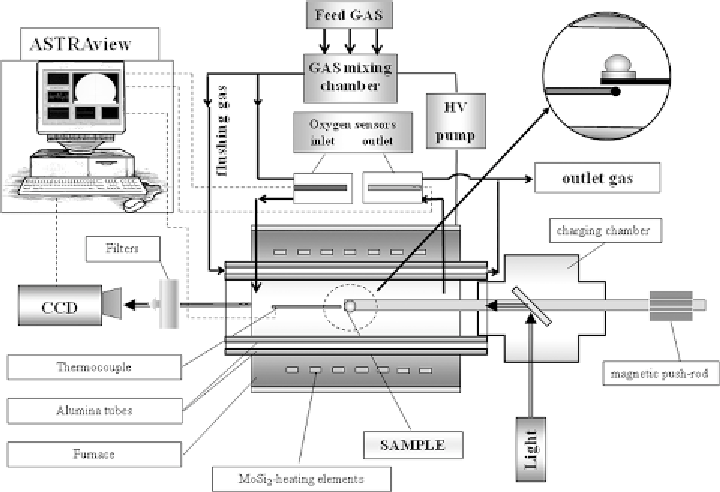Biomedical Engineering Reference
In-Depth Information
Figure 19.
Schematic view of our sessile drop apparatus in the horizontal tubular configuration. Block
diagram without flanges and fittings.
For a fixed metal/ceramic couple, the wetting behaviour can be influenced by
many factors: to obtain reliable Young contact angle measurements, first of all
some essential information about the substrate surface must be given in detail. The
substrate quality should include surface chemistry state, such as surface oxidation,
metallization and, as already discussed, non-stoichiometry [74, 76], surface rough-
ness or surface patterning [208], surface polarity [190] or structure and substrate
phase composition (such as, presence of sintering aids [94] and of different phases
[41]), but also surface anisotropy [67]. In addition, as some products often form at
the interface due to interfacial reactions during the wetting process, the presence of
this new interface has to be demonstrated by suitable analytical methods.
Experiments are conducted using in most of cases the sessile-drop technique
in conjunction with ad-hoc designed image analysis softwares, which allow sur-
face tension and contact angle data to be obtained during each experimental run
(e.g., [209, 210]). Especially designed furnaces are used which can reach 1600
◦
C
or higher temperatures (Fig. 19).
In Fig. 19a schematic view of our experimental apparatus is shown, where:
(1) the specimen can be introduced into the test zone only when temperature and
gas composition are constant at the preset values, (2) the oxygen content of the gas
mixture is measured at the entrance and at the exit of the furnace, (3) a gas (Ar)
is made to flux between the inner and the outer alumina tube in order to keep at a

Search WWH ::

Custom Search